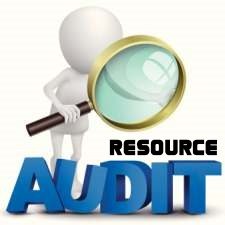Test Checking in Audit | Meaning | Precautions | Merits | Demerits
Table of Contents
What is Test Checking?
Test checking in Audit means checking a few transactions selected at random from a large number of transactions. It is also known as “Selective Verification” or “Sampling Process“.

It is a substitute for detailed checking. It involves only a partial checking. It is based on a simple theme that
If a representative number of transactions, randomly selected by the auditor for test checking is found to be correct, the rest might be correct too.
In simple words in test checking a representative number of entries of each class is selected and checked and, if they are found correct, the remaining entries are also taken to be correct. Test checking is an accepted substitute of detailed checking, which in most of the cases from the economic point of view is unwarranted.
Adoption of test checking methods by auditors
The decision to adopt testing methods depends entirely on the auditor’s judgement and discretion depending on the individual cases and circumstances.
Test checking should be applied and carried out intelligently and carefully; otherwise, it may lead to dangerous consequences. However, the use of test checking depends much upon the system of internal check in operation and the intelligence of the auditor.
Safeguards for the Application of Test Checking
While applying test checks the auditor should take the following precautions:
1. As far as possible sample transactions should be selected from every book.
2. The selection of transactions should be so distributed that the work of almost all the clerks of the client is checked.
3. The items should be selected at random.
4. As fraudulent manipulations are common during the first and last months of the period under audit, the entries made during these periods should be checked thoroughly.
5. In the selection of entries and accounts for applying test checks, care should be taken to check the different portions of the work at each audit.
6. Cash book and pass book should be checked thoroughly.
7. The auditor should select the transactions on his own. He should not consult the staff of the client while selecting the transactions.
If the auditor exercises the above safeguards with care and caution, the results are bound to be encouraging and satisfactory.
Advantages of Test Checking
Test checking enjoys the following advantages:
1. It saves time and energy.
2. If the selection of transactions is done intelligently, test checking is useful and purposeful.
3. The volume of work is reduced. So the auditor can carry on many audit simultaneously.
4. It helps the auditor to arrive at a definite conclusion in regard to the true and fair view of the state of affairs of the concern.
5. It helps in reducing the cost of audit.
Disadvantages of Test Checking
Test checking suffers from the following disadvantages:
1. It is not possible to detect all the errors and fraud.
2. The clerks of the client may become careless because they know that their work will not be checked in detail.
3. Under test checking, although the auditor checks the whole of the work through test checking, suspicion and doubt will remain in his mind.
4. It is of no use if proper and effective systems of internal checks and controls are not being adopted in business.
5. It is not suitable for small business concerns.


